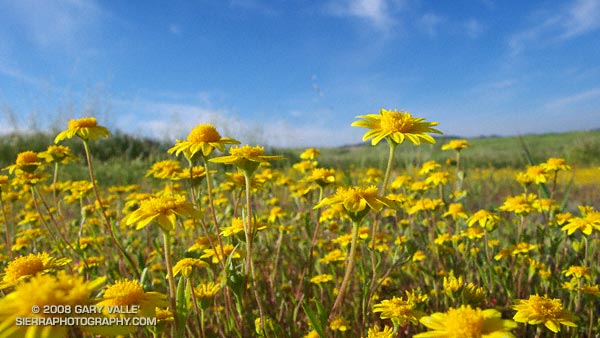
Recumbent view of goldfields (Lasthenia spp.) on Lasky Mesa in Upper Las Virgenes Canyon Open Space Preserve.
Related post: Dealing With Drought

Recumbent view of goldfields (Lasthenia spp.) on Lasky Mesa in Upper Las Virgenes Canyon Open Space Preserve.
Related post: Dealing With Drought
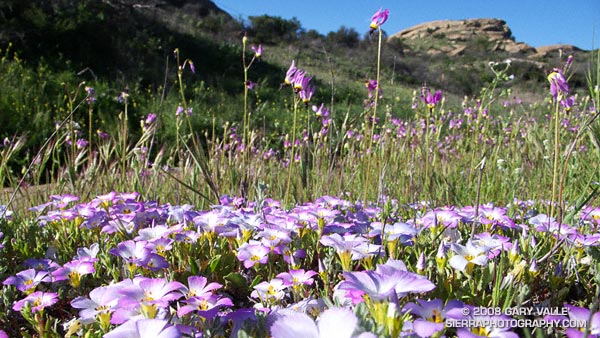
This year’s surprisingly generous rainfall is already producing an explosion of wildflowers in the Simi Hills and Santa Monica Mountains.
These are Padres’ shooting star (Dodecatheon clevelandii ssp. patulum) and ground pink (Linanthus dianthiflorus) at Sage Ranch Park. Both are California natives.
Related post: Shooting Stars
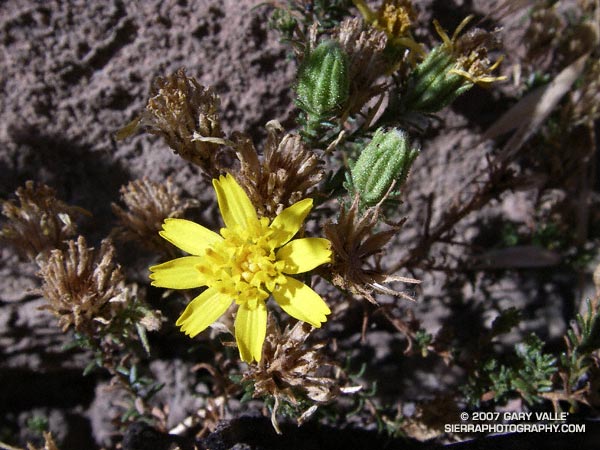
Listed by the California Native Plant Society as being rare, threatened, or endangered, Santa Susana tarweed (Deinandra minthornii) can be found where sandstone outcrops of the Chatsworth formation occur, such as in the Santa Susana Pass area in the Simi Hills.
This photograph was taken on a run at Sage Ranch on October 1, 2007.
Note: Treated as Hemizonia minthornii in the 1993 Jepson Manual.
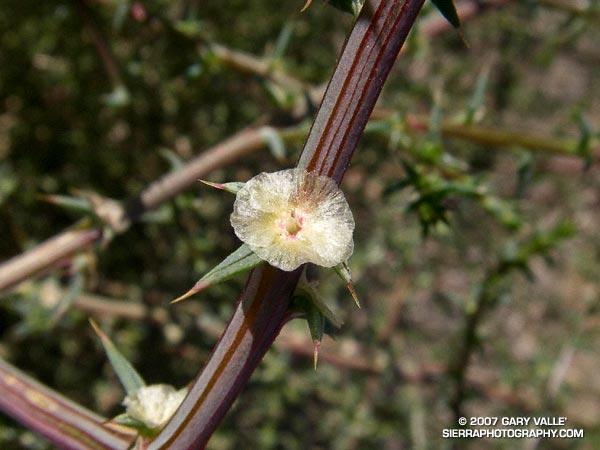
Maybe it’s the result of record low rainfall, or the 2005 Topanga Fire, or a combination of the two — there has been a dramatic increase in the amount of tumbleweed (Salsola tragus) along the dirt roads in Upper Las Virgenes Canyon Open Space Preserve (formerly Ahmanson Ranch).
Like black mustard, and milk thistle, tumbleweed is an invasive plant. According to UC IPM Online tumbleweed is native to southeastern Russia and western Siberia and was first introduced into the United States (South Dakota) in 1873.
The photograph of the tumbleweed flower was taken on a run at Ahmanson Ranch on October 3, 2007.
Some related posts: Dealing With Drought, Milk Thistle Seed Heads, Curly Dock
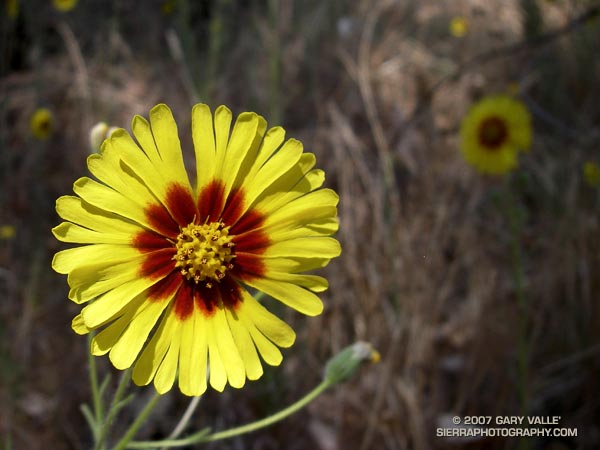
Showy tarweed (Madia elegans ssp. densifolia) blooming along the Mokelumne River. The seeds of tarweed were an ingredient of pinole — a food staple of several California native cultures made from ground seeds. The plant’s common name refers to the sticky nature of the its foliage.
From a run on Saturday morning.
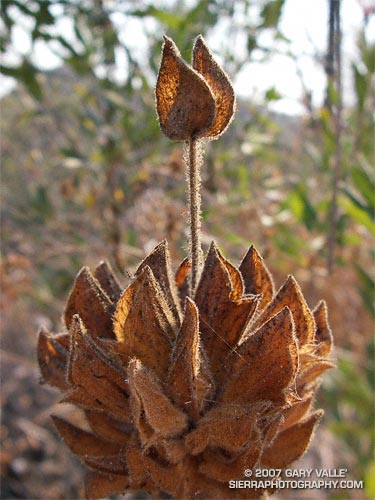
It’s growth exhausted, this dessicated stalk of hummingbird sage (Salvia spathacea) is a relic of Southern California’s 2005-2006 rain season. A robust member of the mint family, the flowering stalks typically grow to a height of 1-3 ft., but in this case the full stalk reached about 4 ft. The 2006-2007 rain season was too dry to produce flowering stalks in this area.
From a run at Sage Ranch Park on August 22, 2007.
Related post: Dealing with Drought